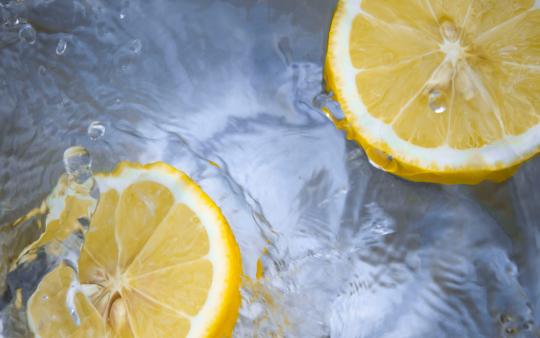You may have been led to believe that cleaning your home is like waging a war on bacteria with the most destructive cleaners available, when common, non-toxic household products like vinegar and baking soda will do just as well. Don’t fall for these popular green cleaning myths!
How to disinfect a house after the flu
Myth #1: If the flu is going around your family, you need to use a disinfectant to kill the germs.
Truth: According to the the Center for Disease Control, “Flu viruses are relatively fragile, so standard cleaning and disinfecting practices are sufficient to remove or kill them. Special cleaning and disinfecting processes, including wiping down walls and ceilings, frequently using room air deodorizers, and fumigating, are not necessary or recommended. These processes can irritate eyes, noses, throats, and skin; aggravate asthma; and cause other serious side effects.” Instead, they recommend doing a good clean with hot, soapy water. For extra disinfecting help, vinegar will kill the flu virus.
Disinfecting with chlorine bleach
Myth #2: Chlorine bleach is a relatively safe disinfectant. We use it in water after all.
Truth: Chlorine bleach is a pesticide that can irritate the lungs and throat even through proper use, and can cause serious injury or death when inappropriately used (such as when combined with certain other household cleaners like ammonia). Not to mention that the use of chlorine bleach has been linked to the creation of the super toxin, dioxin. If you do use bleach, surfaces must be wiped clean before and after its application to ensure no residue is left behind.
Cleaning first is important
Myth #3: A disinfectant will get your house cleaner than soap, vinegar, or baking soda.
Truth: A disinfectant won’t clean your house for you. In fact, a disinfectant won’t work as such until after a surface has been cleaned.
Washing clothes with hot water
Myth #4: Your clothes will be disinfected if you wash them in hot water.
Truth: The hot water in your house won’t get hot enough on its own to disinfect anything. In the washer, opt for cold or warm water instead. If disinfecting is really necessary, then dry the clothes on hot in the dryer for at least 10 minutes or hang them in the sunshine to dry. You can also add a few drops of tea tree oil to the wash to kill additional germs. Or, to brighten colours or whites, use an oxygen-based whitener and warm water (or spot clean with the same cleaner and a bit of really hot water). Also remember that you probably don't need to wash your clothes as often as you do.
Cleaning with natural ingredients
Myth #5: If it says “green”, it must be green.
Truth: Just because it smells like an evergreen doesn’t mean it’s safe. Some “natural” ingredients can be toxic. For instance, many cleaners and air fresheners use terpenes derived from plant oils, such as pine oil, that release VOCs. Terpenes also produce formaldehyde and organic particulate matter when they react with ozone (which can waft in from outside air or be released from some air filters, printers, or photocopiers).









